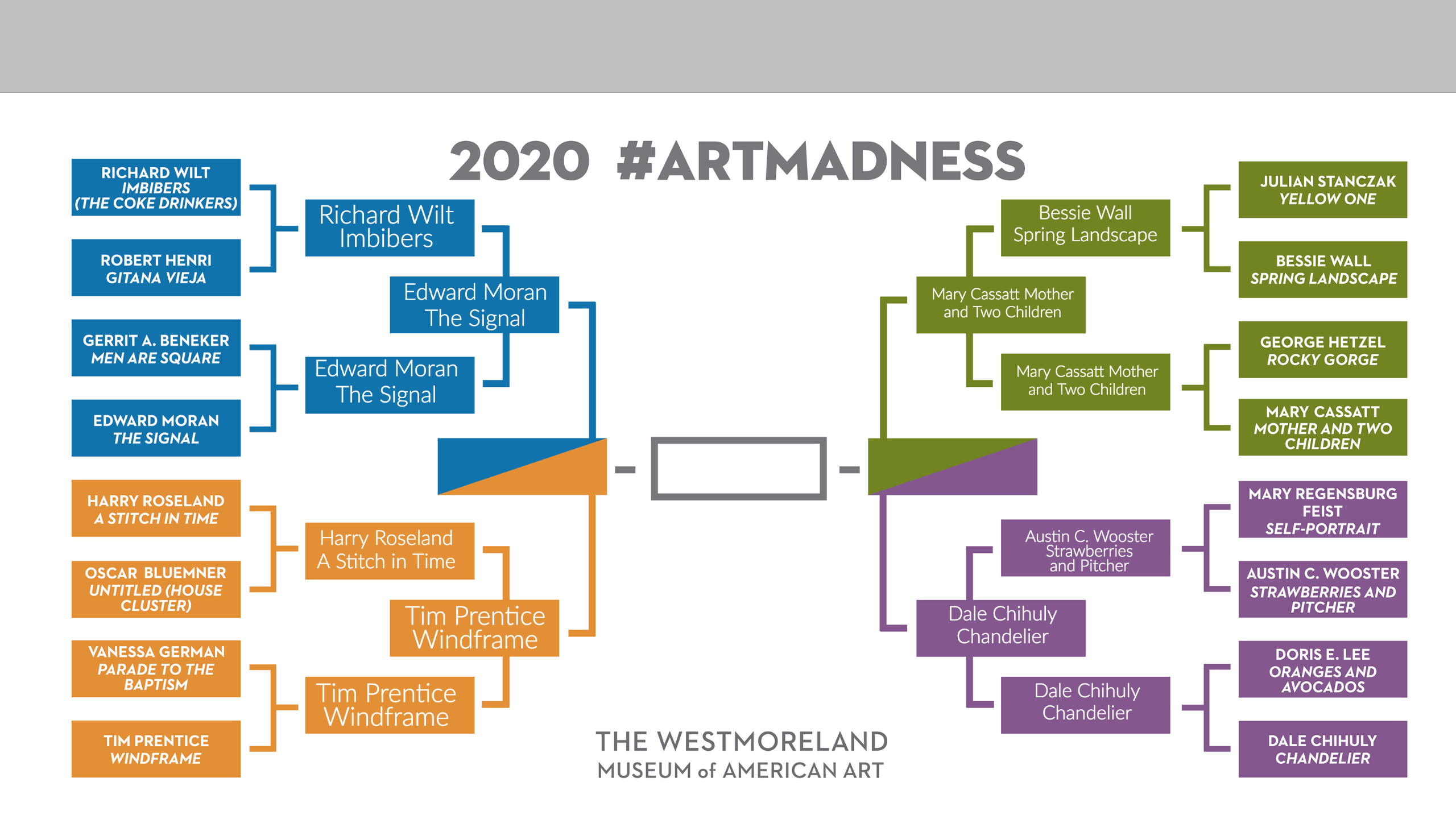Art Madness March Madness
Just because March Madness was cancelled, doesn’t mean you can’t win bragging rights by creating the best bracket!
Participate in #ArtMadness, a tournament pitting 16 of our staff’s favorite artworks against each other! Download your Art Madness Bracket, print it and fill it out. Follow our Instagram (@westmorelandmuseum) and vote on who you think should advance to the Elite Eight and ultimately which work of art should be the #ArtMadness Champion!
- March 26-27: Sweet Sixteen Story, Vote on which works will move onto the Elite Eight.
- March 28- 29: Elite Eight Story, Vote on which artworks will move onto the Final Four.
- April 3- 4: The Final Four Story, Vote on which artworks will move onto the Championship.
- April 6: The Art Madness Championship, Vote on which artwork you think should be the Art Madness Champion!
Make sure you follow our Facebook (@TheWestmoreland) for updates about the Art Madness Tournament and see how your bracket compares!
Art Madness Champion!
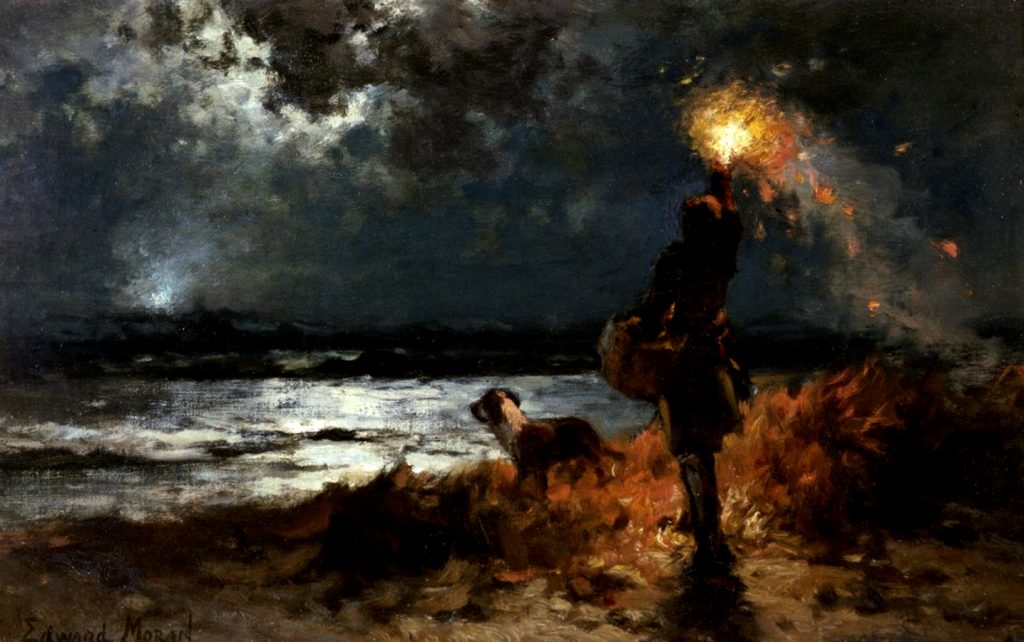 After a grueling Art Madness Tournament featuring 16 different artworks from our permanent collection, your 2020 Art Madness Champion with 60% of the final vote is The Signal by Edward Moran!
After a grueling Art Madness Tournament featuring 16 different artworks from our permanent collection, your 2020 Art Madness Champion with 60% of the final vote is The Signal by Edward Moran!
Art Madness Championship Faceoff
The Signal by Edward Moran moved onto the Championship with 52% of the vote!

Nominated by Membership & Development Coordinator Ginnie Leiner and Manager of Communications Maggie Geier.
“I love Moran’s brushstrokes and how he depicts the moonlight sky, the torch, and the ship off in the distance. It’s such a gorgeous work of art” – Maggie Geier
English-born artist Edward Moran is known for his Romantic seascapes and marine paintings, but may be most famous for his series of 13 historical paintings of United States marine history. He emigrated to the United States in 1844 and lived in Philadelphia, where he studied with the artist James Hamilton. Moran was a member of the National Academy of Design, the American Watercolor Society, and the Lotus Club.
Mother and Two Children by Mary Stevenson Cassatt moved onto the Championship with 56% of the votes!
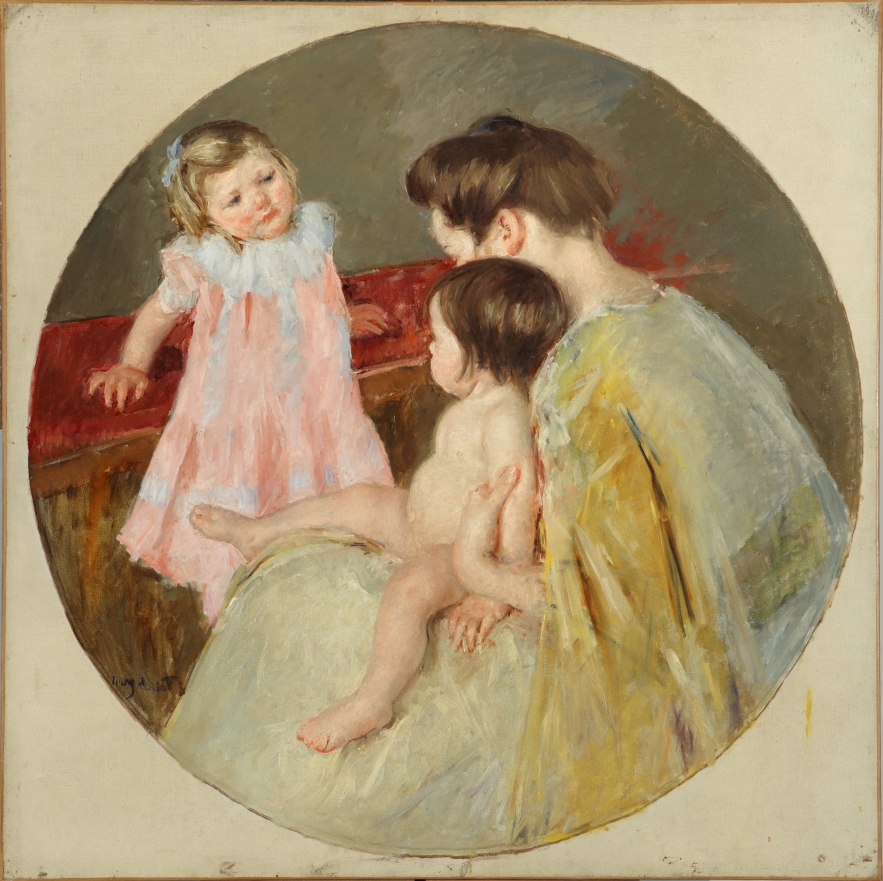
Nominated by Collections Manager Doug Evans and Director of Marketing and Public Relations Claire Ertl.
“I always argue this is our visitors’ most-loved piece. On the few occasions it has not been on exhibit they’ve missed her & asked for her! A beautiful scene of maternal love – comforting.” – Doug Evans.
Beginning in the 1880s, Cassatt explored the subject of mother and child, using various compositions and media and employing her sister and nieces as models.
Final Four Contenders
The Signal by Edward Moran moved onto the Final Four with 59% of the vote!

Nominated by Membership & Development Coordinator Ginnie Leiner and Manager of Communications Maggie Geier.
“I love Moran’s brushstrokes and how he depicts the moonlight sky, the torch, and the ship off in the distance. It’s such a gorgeous work of art” – Maggie Geier
English-born artist Edward Moran is known for his Romantic seascapes and marine paintings, but may be most famous for his series of 13 historical paintings of United States marine history. He emigrated to the United States in 1844 and lived in Philadelphia, where he studied with the artist James Hamilton. Moran was a member of the National Academy of Design, the American Watercolor Society, and the Lotus Club.
Windframe by Tim Prentice moved onto the Final Four with 58% of the vote!
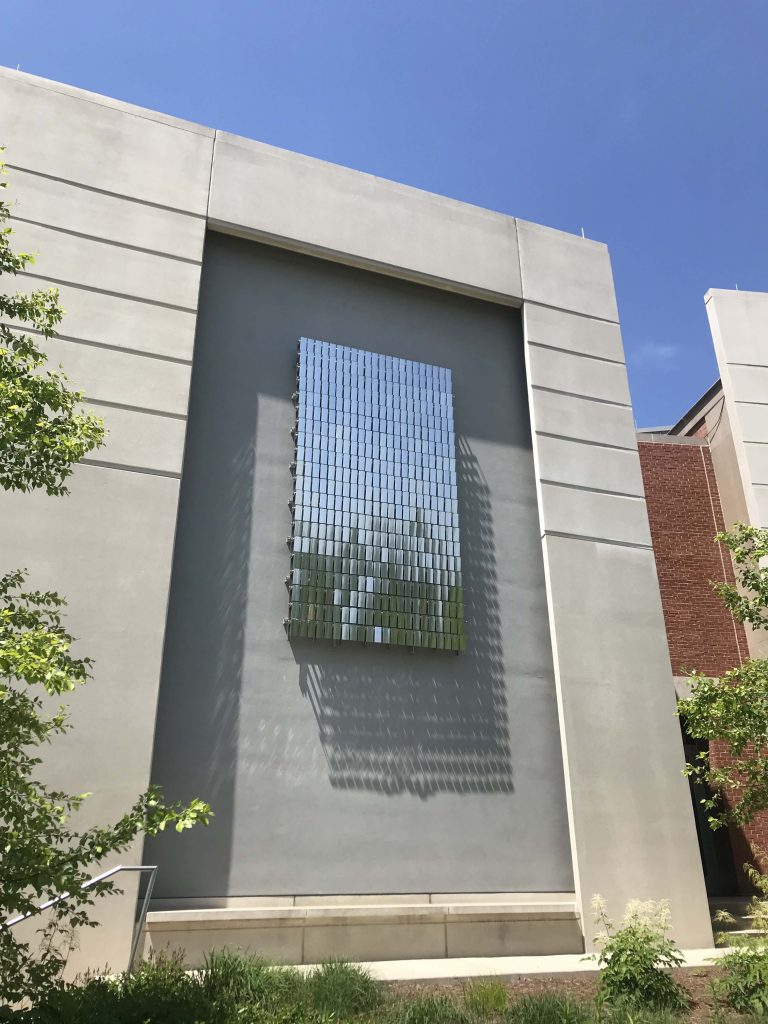
Nominated by Graphic Designer Jackie Brightwell and Accounting Manager Gina Falcon.
“I love how this is constantly moving and changing with the wind.” – Accounting Manager Gina Falcon.
“Viewing this artwork is a highlight of my morning walk into the Museum – particularly on partly cloudy, mildly windy days.” – Graphic Designer Jackie Brightwell.
Tim Prentice, 86, is an architect-turned-sculptor from West Cornwall, Connecticut, and his kinetic sculpture, “Windframe,” made of a grid of 440 shimmering stainless steel plates that wave and dance in the wind, is located on the front of the Museum’s building.
Mother and Two Children by Mary Stevenson Cassatt moved onto the Final Four with 51% of the votes!

Nominated by Collections Manager Doug Evans and Director of Marketing and Public Relations Claire Ertl.
“I always argue this is our visitors’ most-loved piece. On the few occasions it has not been on exhibit they’ve missed her & asked for her! A beautiful scene of maternal love – comforting.” – Doug Evans.
Beginning in the 1880s, Cassatt explored the subject of mother and child, using various compositions and media and employing her sister and nieces as models.
Chandelier by Dale Chihuly moved onto the Final Four with 65% of the votes!
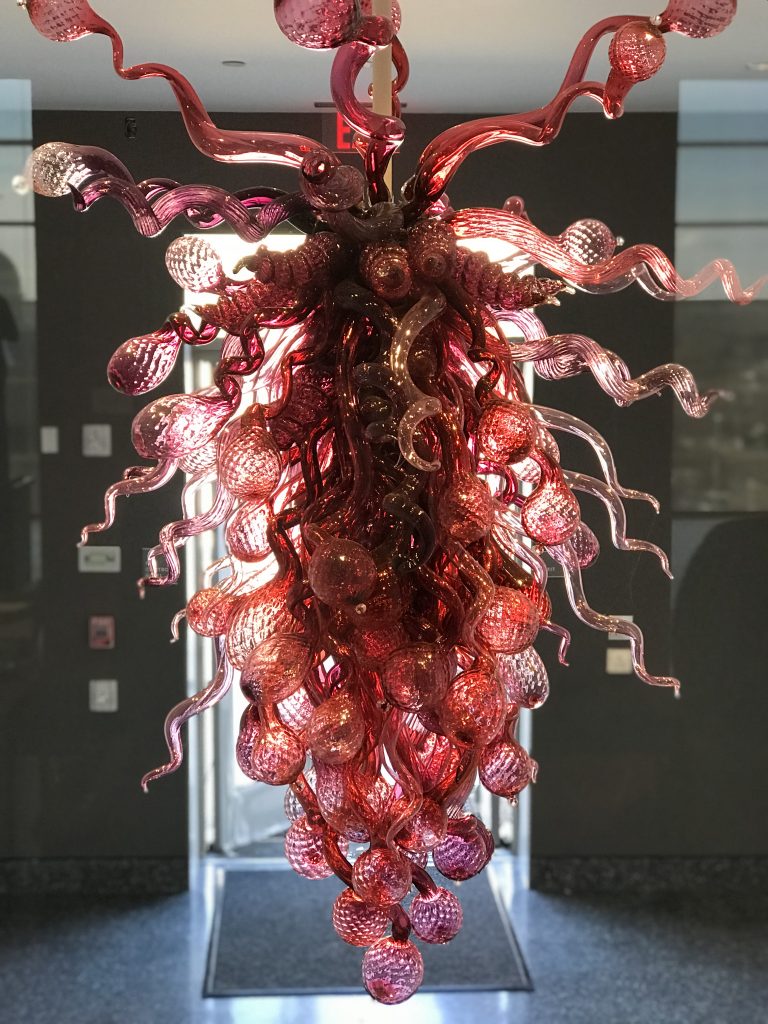
Nominated by Director of Marketing & Public Relations Claire Ertl.
“Glass itself is so much like water. If you let it go on its own, it almost ends up looking like something from the sea.” – Dale Chihuly.
Chihuly’s aquatic inspiration is evident in much of his work, including his chandelier series created during the 1990s. The Westmoreland’s chandelier is one of Chihuly’s earliest experimental installations, unique in both its glass blowing technique and armature system.
Eliminated Contenders
Imbibers (The Coke Drinkers) by Richard Wilt – Eliminated during the Elite Eight
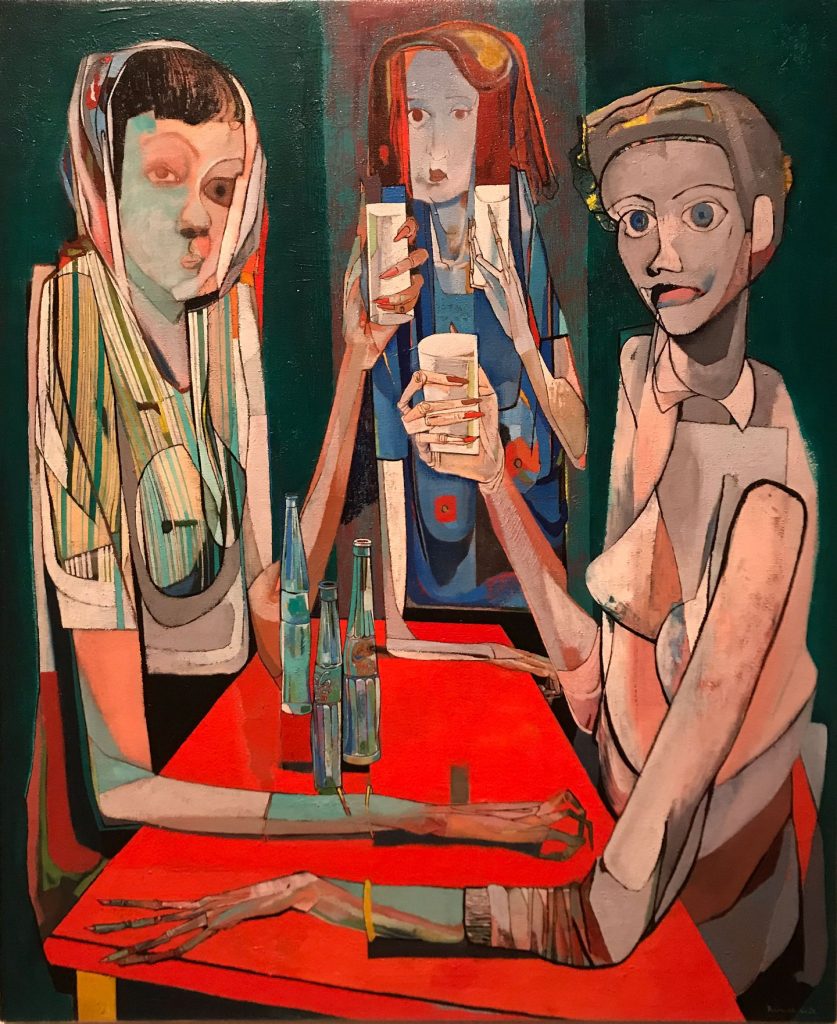
Nominated by Public Programs Manager Mona Wiley and Employee Benefits Manager Sarah Rowe.
“I adore how haunting this piece is. Even though we are getting a glimpse of three individuals enjoy a beverage together each one of the characters is alone and withdrawn. I love the duality of isolation in a group setting. It also has a Tim Burton feel that I adore!” – Mona Wiley
“I love the bright colors, the abstract nature of the drinkers, and that this makes it look a little creepy!” – Sarah Rowe.
Gitana Vieja (Madre Gitana) by Robert Henri – Eliminated during the Sweet Sixteen
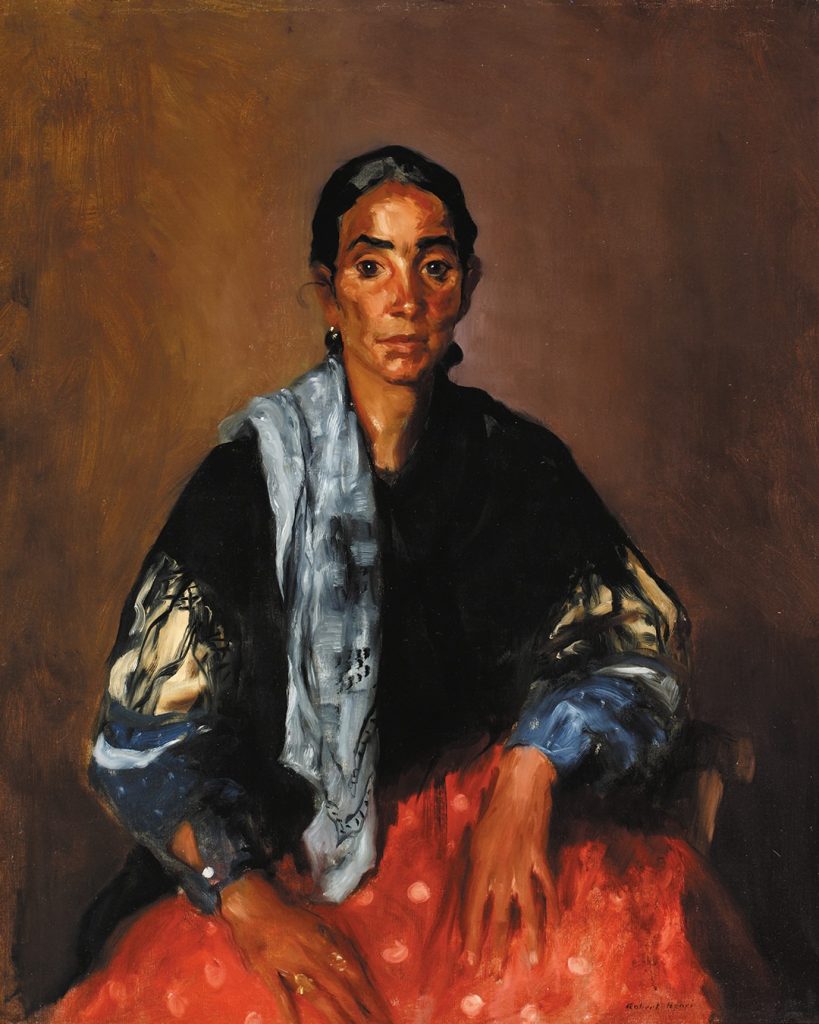
Nominated by Membership & Development Coordinator Ginnie Leiner.
“Her face shows that she has known hard times and sorrow but she also knows how to persist and survive. I am sure her troubles were much worse that social distancing but in her face, I see a message for me. You can do it, girl!” – Ginnie Lenier.
Robert Henri’s Gitana Vieja (Madre Gitana) is portrait that seems alive, caught in a moment, due to Henri’s skill in working quickly, concentrating on color and form while emphasizing facial features and hand, instead of belaboring on specific details.
Men are Square by Gerrit A Beneker-Eliminated in the Sweet Sixteen
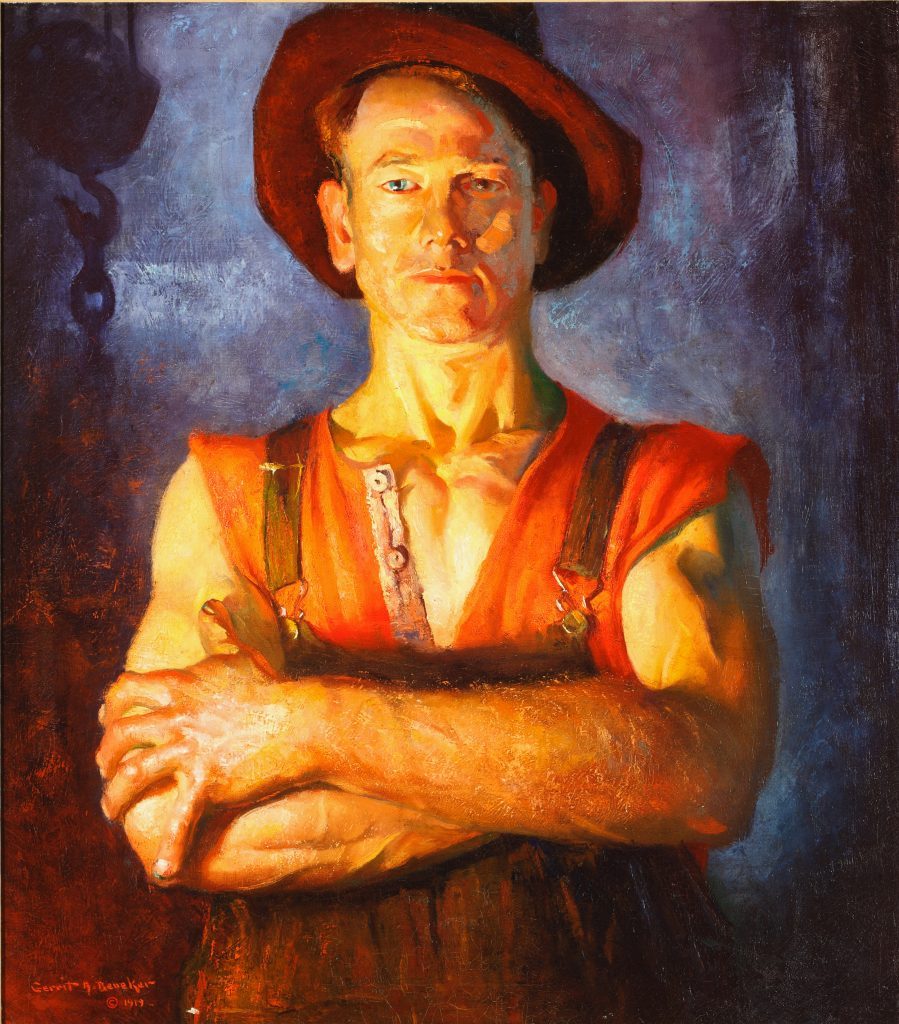
Nominated by Membership & Development Coordinator Ginnie Leiner.
In 1905, Gerrit Beneker began his art career as an illustrator, and in 1912 Gerrit went to Provincetown to attend Charles Hawthorne’s painting classes. In 1918, Gerrit was asked to come to Washington DC to paint posters for the US Navy, and a year later Hydraulic Pressed Steel Co., Cleveland, Ohio, hired Beneker as an artist in residence. His job was to paint the men in the factories and steel mills. Beneker painted about 500 oil paintings over his nearly 30-year career, not including those done for magazine illustrations with his primary expertise being portraits.
A Stitch in Time (Sewing on a Button) by Harry Roseland -Eliminated during the Elite Eight
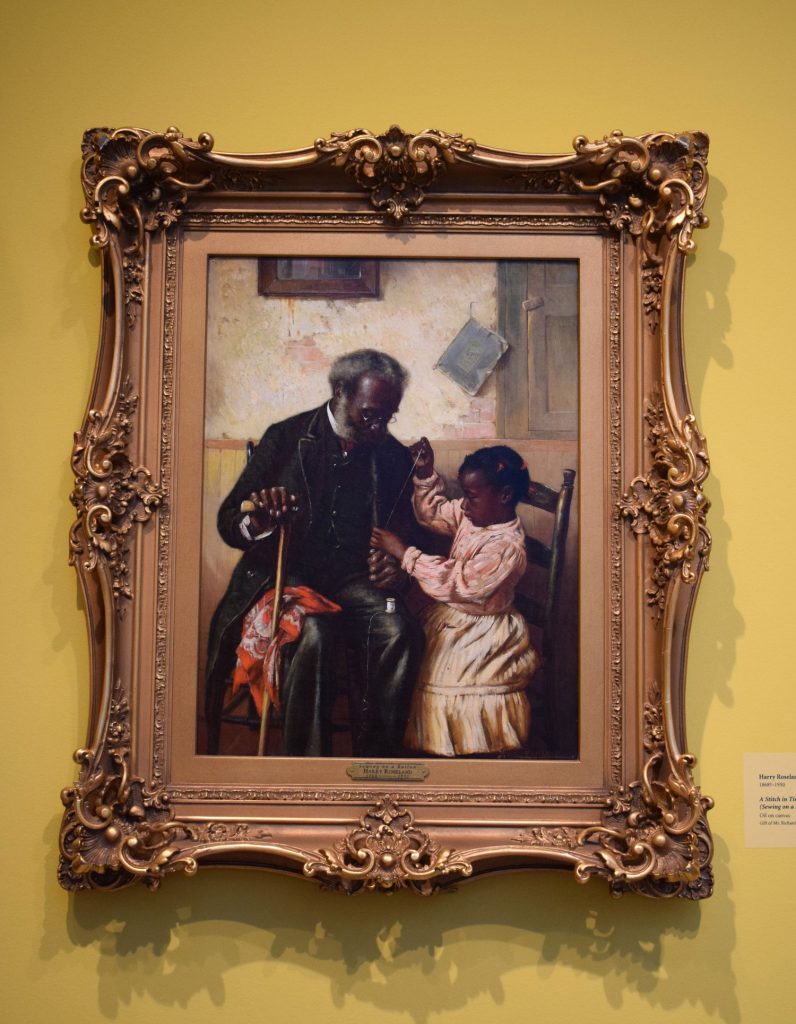
Nominated by Membership & Development Coordinator Ginnie Leiner.
Although Roseland was largely a self-taught artist, he did study alongside Thomas Eakins, C. Beckwith, and J.B. Whittaker. Roseland became one of America’s finest genre painters of the 19th and 20th century and known for paintings that told a story. In “A Stitch in Time (Sewing on a Button),” Roseland masterfully renders a moment in time between a grandfather and his granddaughter who are both concentrating on the sewing of a button.
6. Untitled (House Cluster) or Untitled (Stumpy Shapes in a Pattern) by Oscar Florianus Bluemner, Eliminated during the Sweet Sixteen
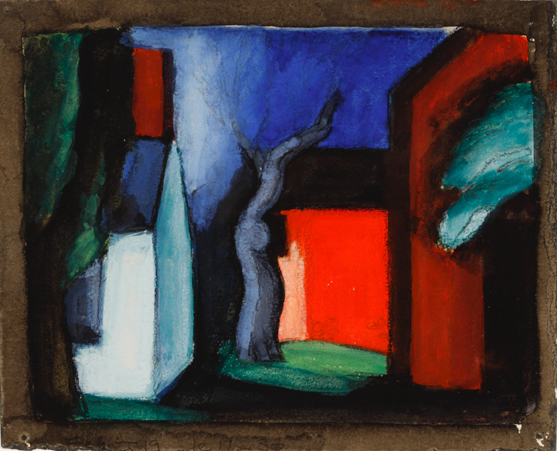
Nominated by Membership & Development Coordinator Ginnie Leiner.
Bluemner’s compositions derive from his architectural training, but it is his personal style and use of color that so strongly convey mood in his works. He painted both large and small canvases, and many are tiny, including the Museum’s Untitled (House Cluster), yet dynamic in their scale due to their color combinations. Geometric patterns of color constitute this painting and Untitled (House Cluster) has an intense blue, red and green color palette with heavy black outlines, achieving an enormous impact on the viewer.
Parade to the Baptism by Vanessa German- Eliminated during the Sweet Sixteen
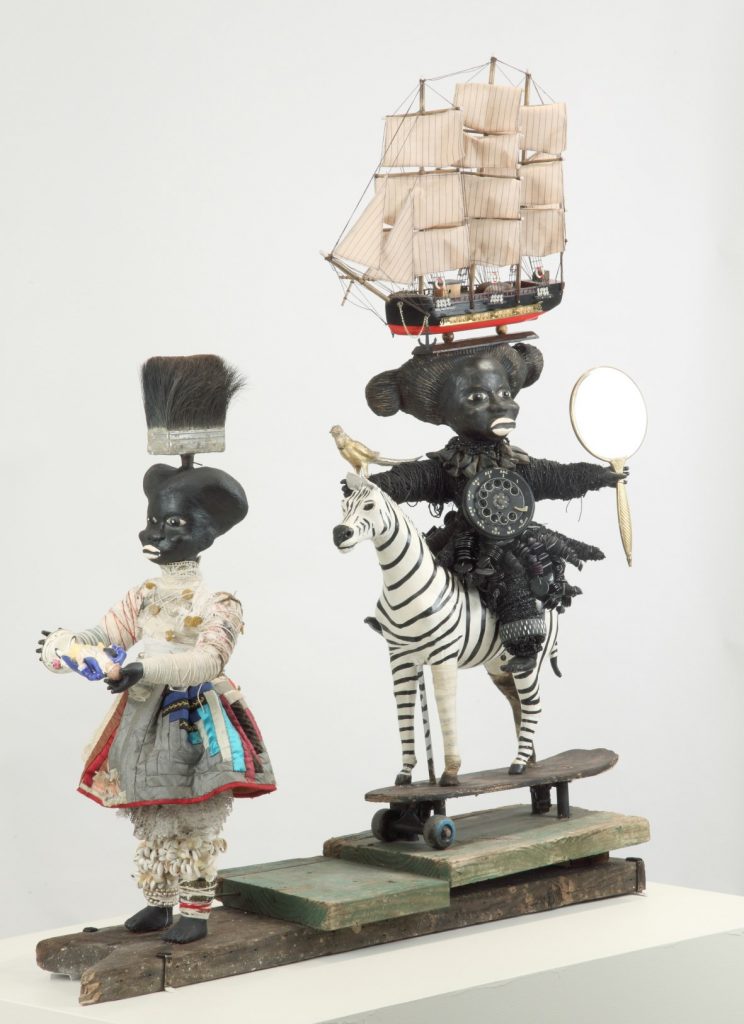
Nominated by The Richard M Scaife Director/CEO Anne Kraybill
“My favorite: Vanessa German, Parade to the Baptism. This is such a powerful work that challenges so much of American history. Vanessa is also able to create from things around, demonstrating that creativity is all around us.” -Richard M Scaife Director/CEO Anne Kraybill.
Vanessa German’s “Parade to the Baptism.” Reminiscent of the Central African tradition of nkisi nkondi, German’s Power Figure is composed of empowered objects and intended to heal and protect a community in the midst of turmoil. The intricate mixed media sculpture bridges the past, present and future of African American experience. One figure challenges viewers with a mirror, a symbolic reminder of the role we all play in the injustices of human experience and the responsibility we personally have to create change.
Yellow One by Julian Stanczak- Eliminated during the Sweet Sixteen
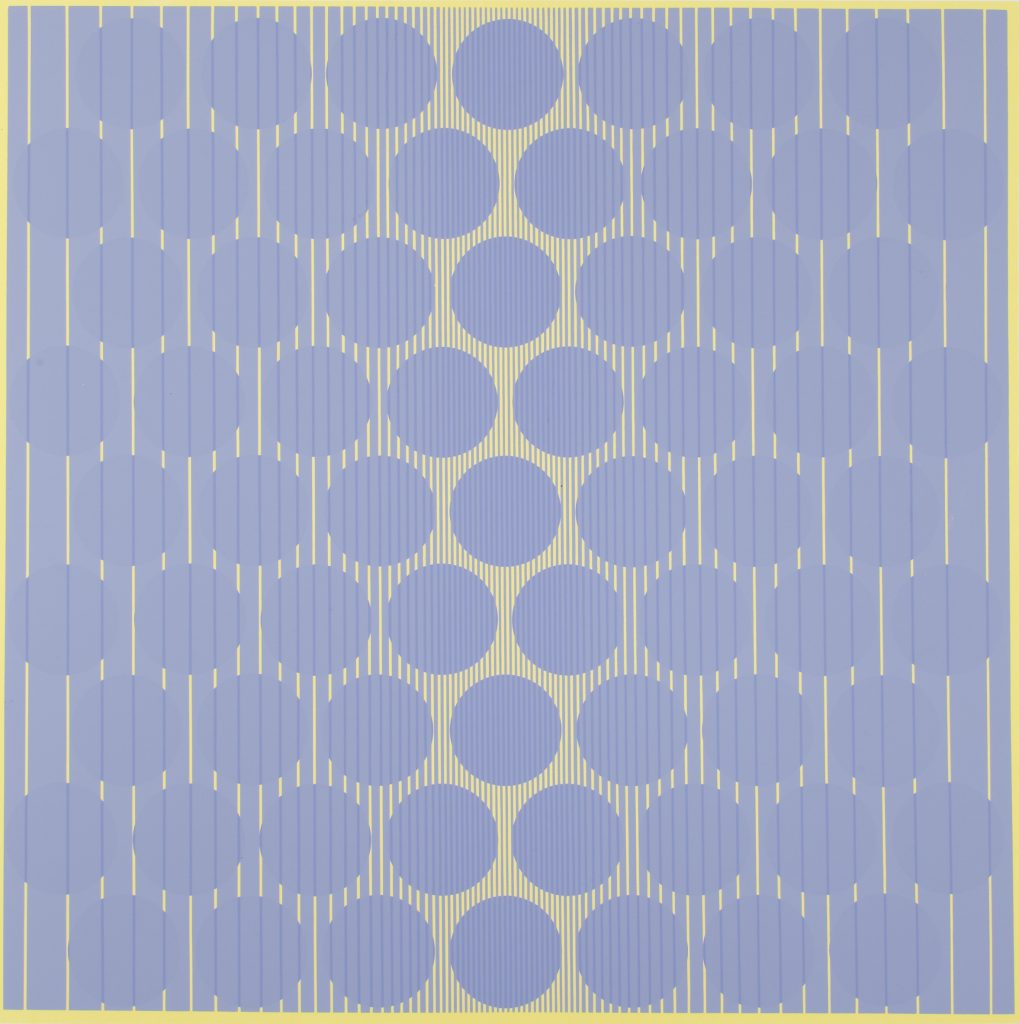
Nominated by Graphic Designer Jackie Brightwell.
“This Op Art work beautifully combines a few of my favorite things as a graphic designer: geometric shapes, flat colors, and optical illusions created by line width variations.”-Jackie Brightwell.
The Optical or Op art movement was named after an exhibition of the work of Julian Stanczak at New York’s Martha Jackson Gallery in 1964. Defined as a style of abstract art that gives the ‘optical’ illusion of movement in a two-dimensional work of art.
Spring Landscape by Bessie Wall – Eliminated during the Elite Eight
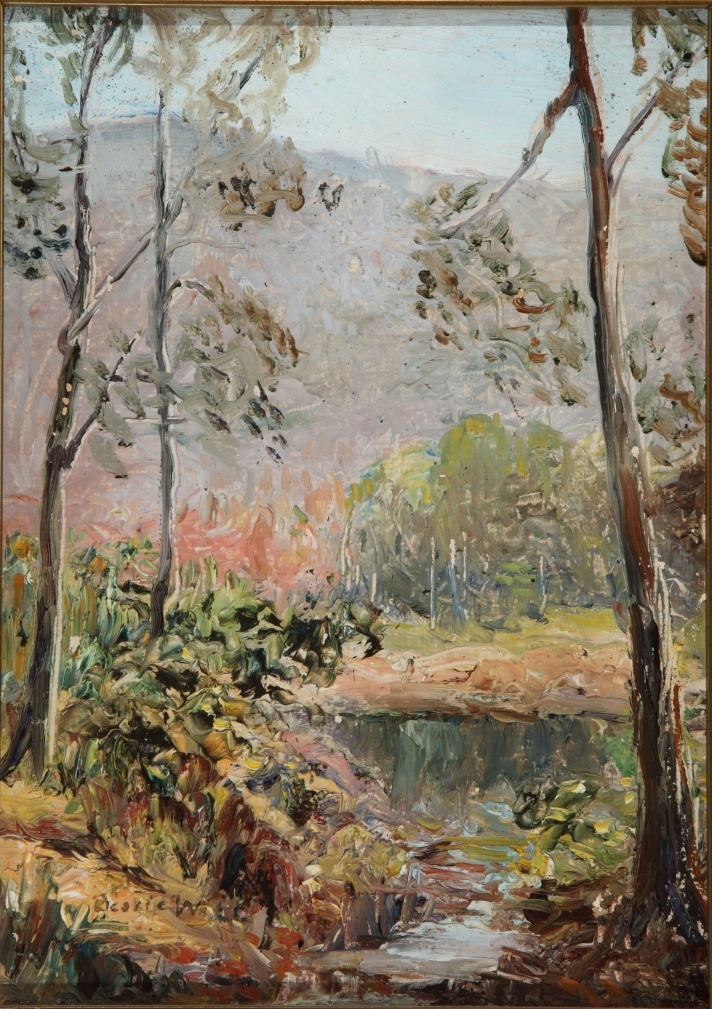
Nominated by Director of Advancement Rhonda Madden.
“I’m nominating this painting because I love the pale salmon colored strokes that stand out and express the hope that comes with spring. I also like that the artist Bessie Wall earned recognition for her own gifts in light of her father and brother’s success.” – Rhonda Madden.
Bessie Wall, daughter of Alfred S. Wall, the Pittsburgh painter, and the niece of William Coventry Wall, was born Sarah Elizabeth Wall on October 13, 1872 in Woods Run, Allegheny County, Pennsylvania. She was taught how to paint by her father and accompanied him and her uncle to Scalp Level, PA, a popular destination for Pittsburgh painters of the late 19th century and early 20th century.
Rocky Gorge by George Hetzel- Eliminated during the Sweet Sixteen
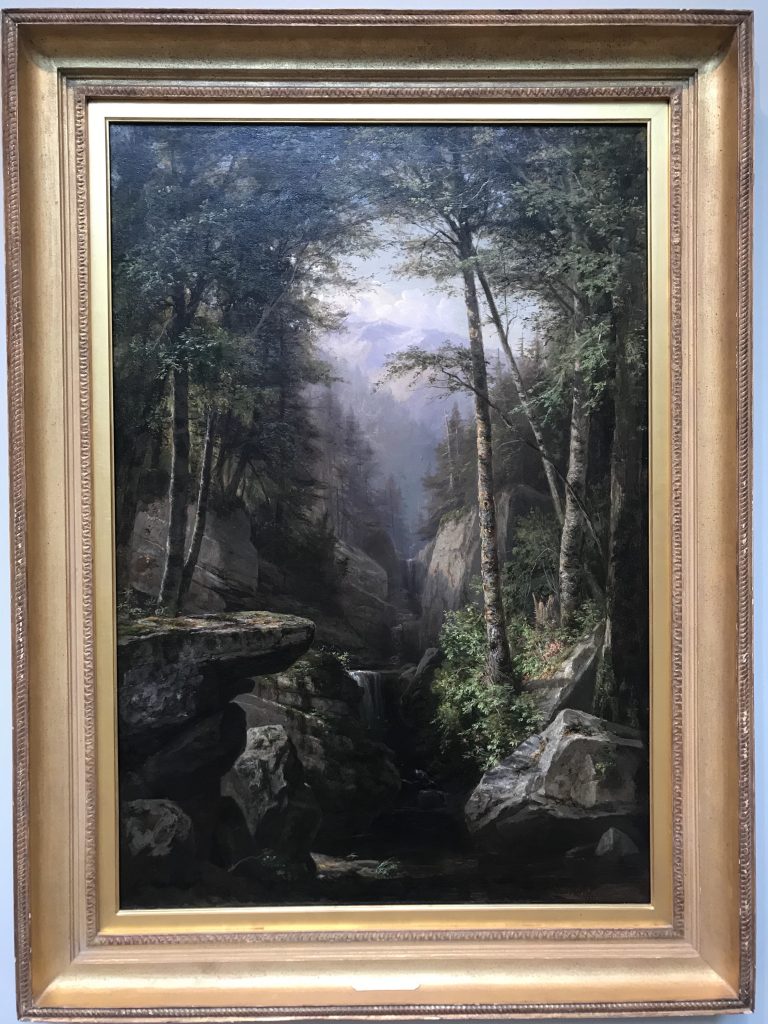
Nominated by Accounting Manager Gina Falcon.
“I love how his paintings are so realistic and make me feel like I am actually there.” – Gina Falcon
George Hetzel, the founder of the Scalp Level School, was among the artists who studied at the Dusseldorf Academy to observe naturalistic detail and render details in a precise manner. Hetzel painted very precise landscapes, bucolic scenes of the rural Southwestern Pennsylvania woodlands.
Self-Portrait by Mary Regensburg Feist – Eliminated during the Sweet Sixteen
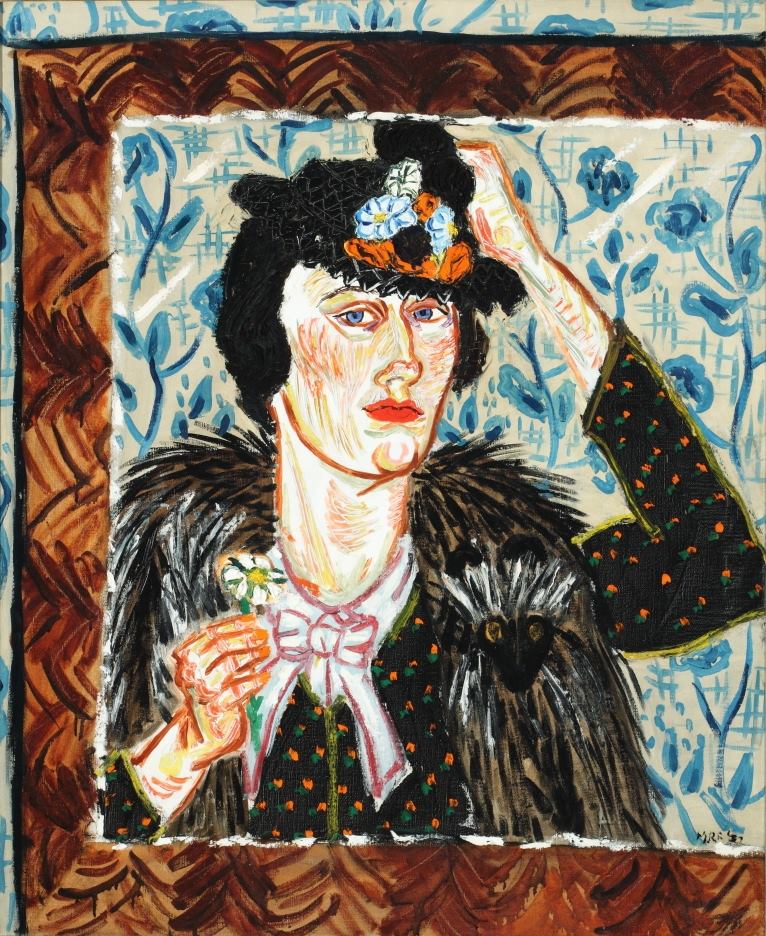
Nominated by Collections Manager Doug Evans.
“While working on Mary’s exhibition many years ago I became friends with the artist. Over the years our friendship continued to grow, I enjoyed the fiercely independent woman and the stories she told through her paintings. This early Self-Portrait was completed at a time Mary’s world was changing fast and sense she is pausing to see if we are ready!”- Doug Evans.
Mary Regensburg Feist grew up in New York City, and while she attended high school, she was excused every day at noon to study at the Grand Central School of Art. Feist was an ambassador for the Society of Independent Artists, and her work has appeared alongside works from artists such as John Sloan, Maurice Prendergast, Philip Evergood and Joseph Stella. Her solo exhibition, “Family and Friends,” was held at The Westmoreland in 1996.
Strawberries and Pitcher by Austin C. Wooster- Eliminated during the Elite Eight
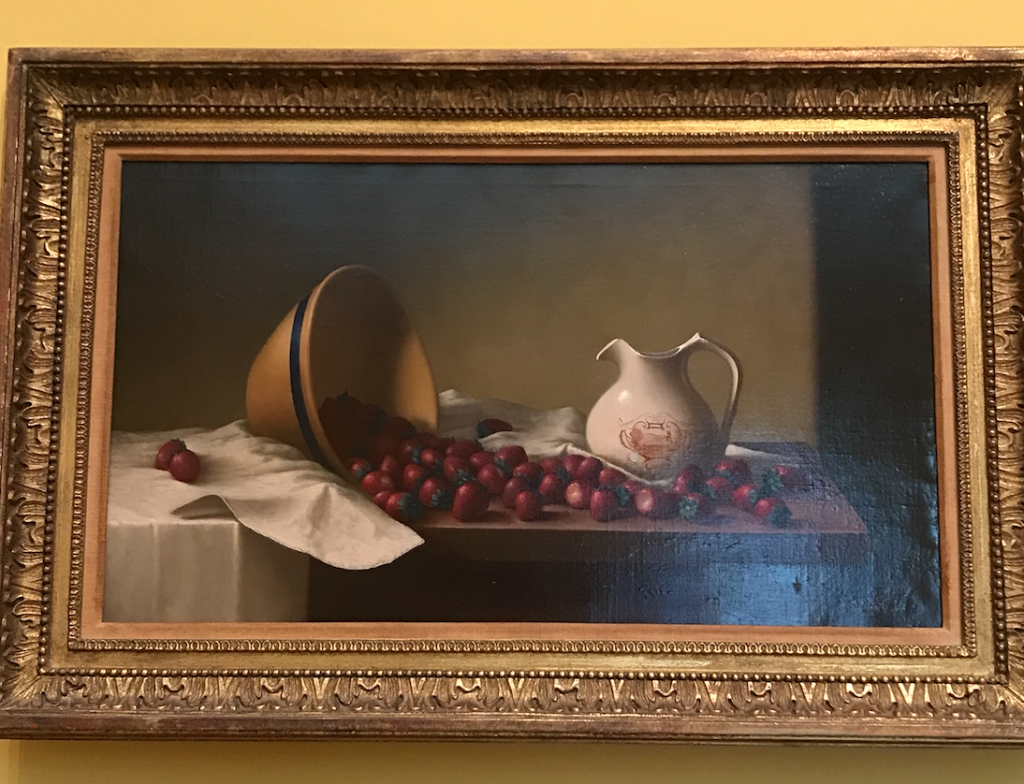
Nominated by Art Team Intern Jordan Sapp.
“I think this painting should be included in the tournament because it embodies the feeling of summer. In these times of rainy isolation, I dream of the next time I can lay in the sun and eat fruit without a worry. This painting keeps my hopes up.” – Jordan Sapp
Little is known about the life of Austin C. Wooster (1838 – 1913). He was born in Chartiers Valley, near Pittsburgh, and is thought to have worked and lived exclusively in Pittsburgh throughout his career. He began painting as a landscape artist, but soon turned to still lifes in the tradition of Albert F. King, a fellow Pittsburgh artist, with whom he may have studied.
Oranges and Avocados by Doris E. Lee- Eliminated during the Sweet Sixteen
Nominated by Art Team Intern Jordan Sapp.
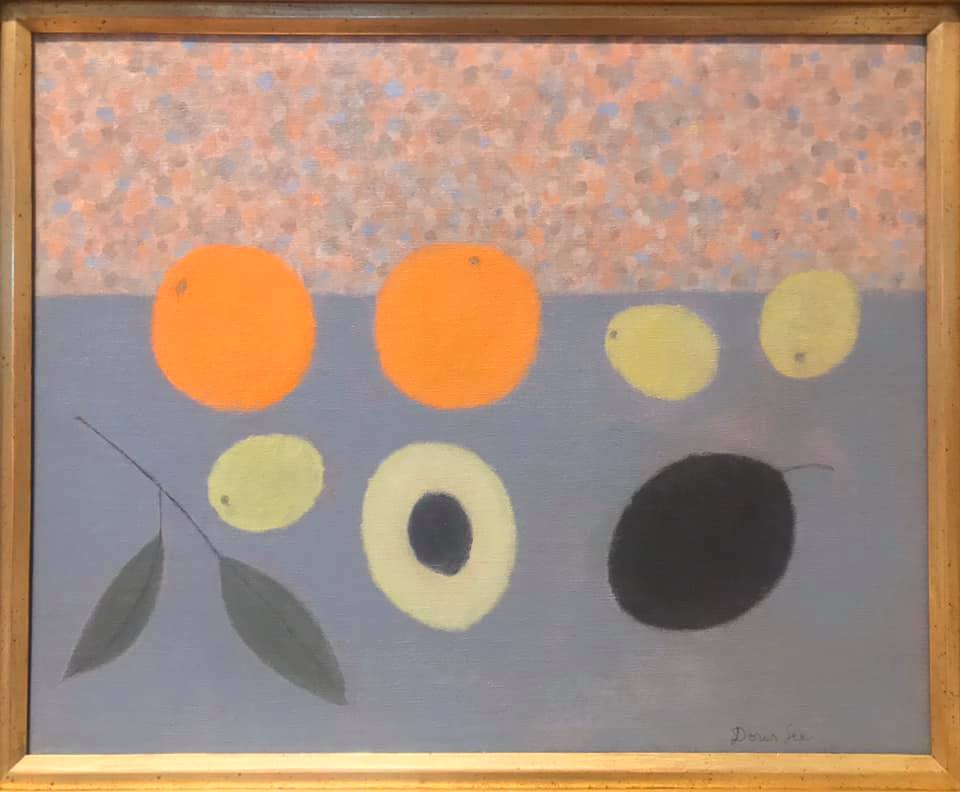
“After being so involved with preparations for her exhibit/book, I have grown to be a real fan of Doris Lee. This painting feels very gentle and welcoming to me with its lovely pastels. Her later style became looser and more abstract, and I think you can get a good idea of that from this piece.”- Jordan Sapp
Doris Lee was one of the most successful artists of the Depression Era, and during the 1930s and 1940s, she was one of the most recognized artists in the country and a leading figure in the Woodstock Artist’s Colony. Lee was concerned with life in rural America and with her simplified style and ideology, her work had much in common with American scene painting.
